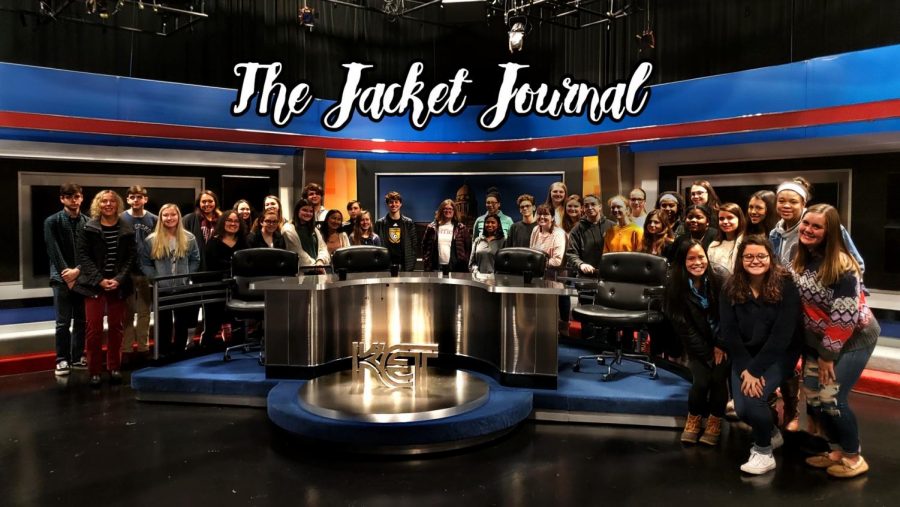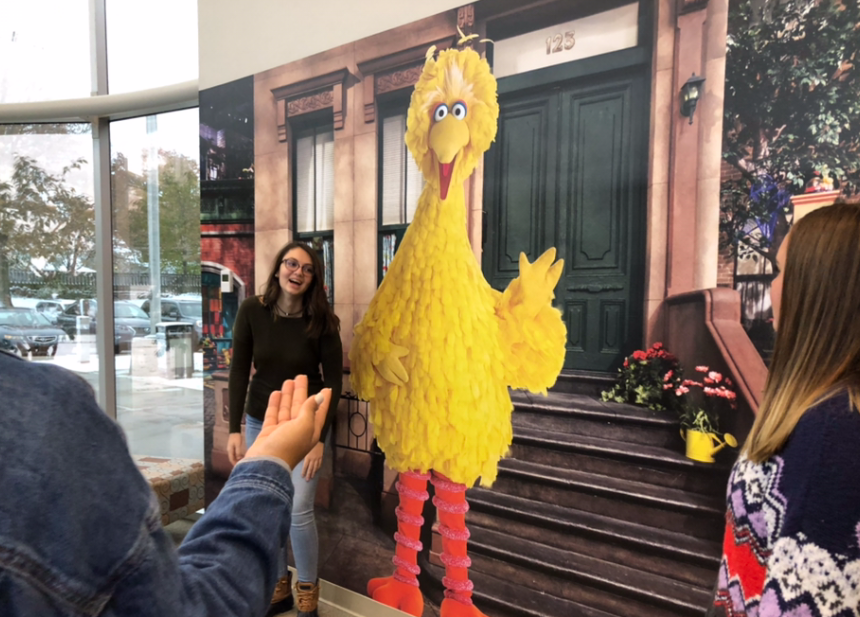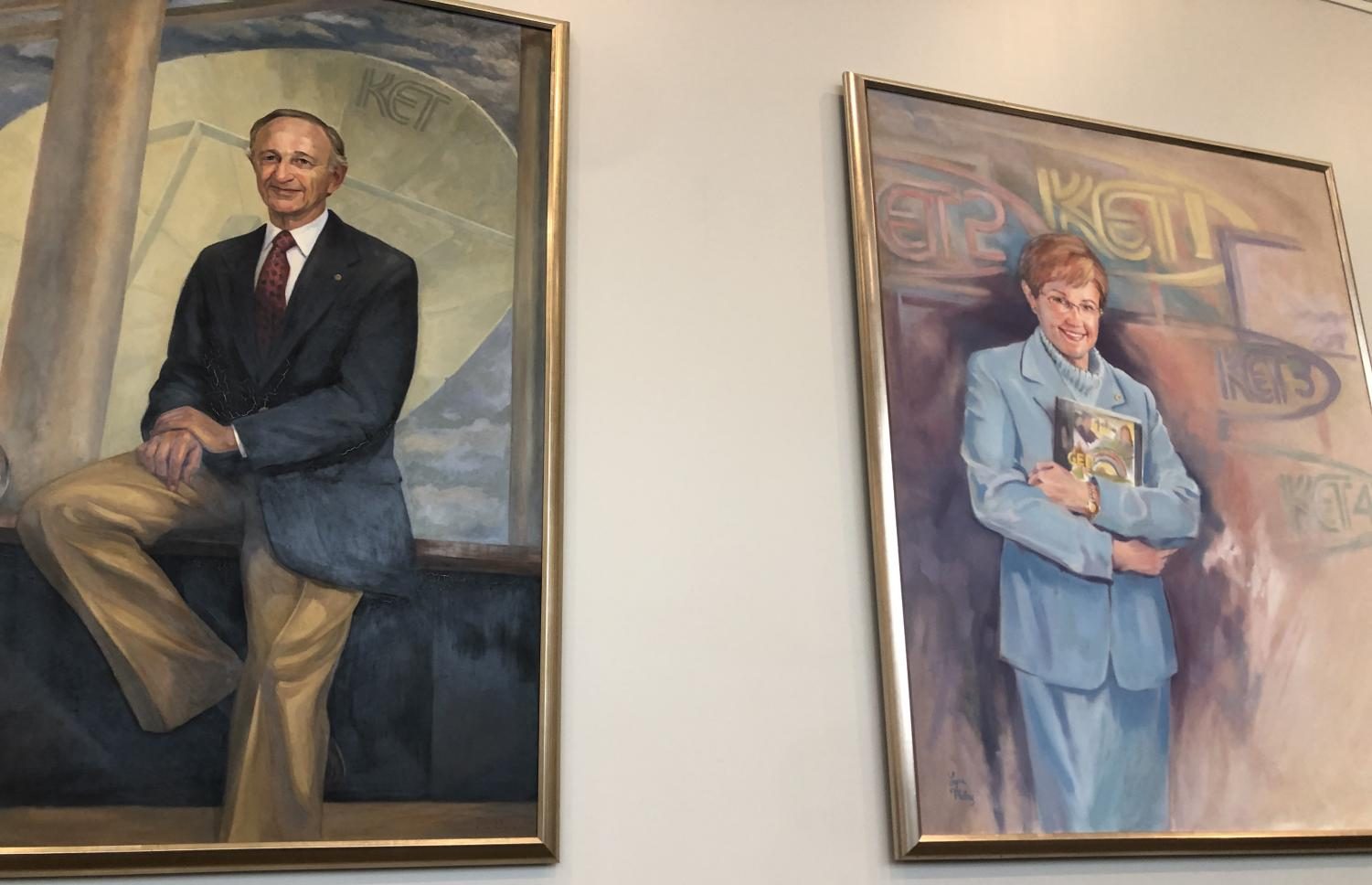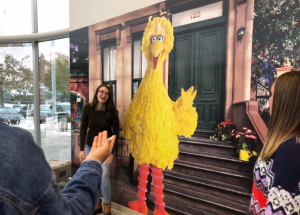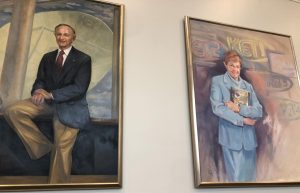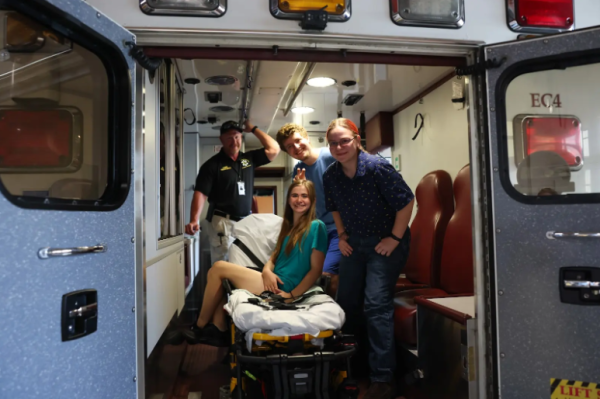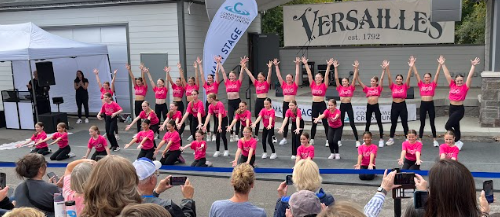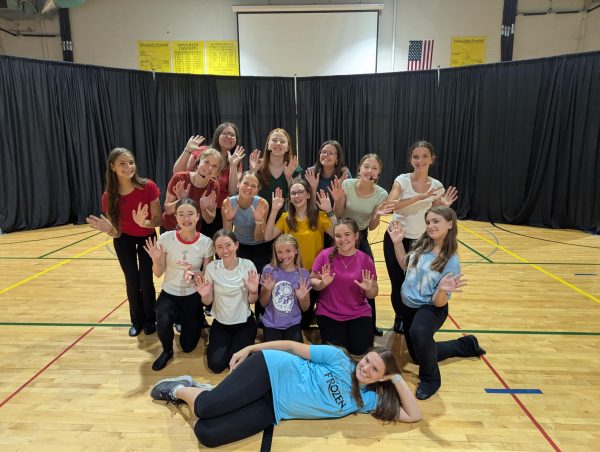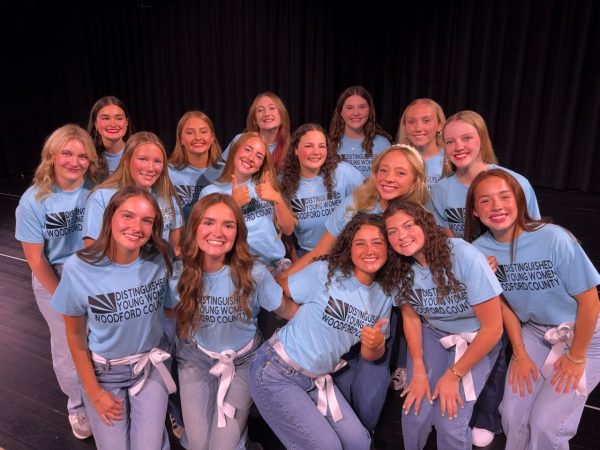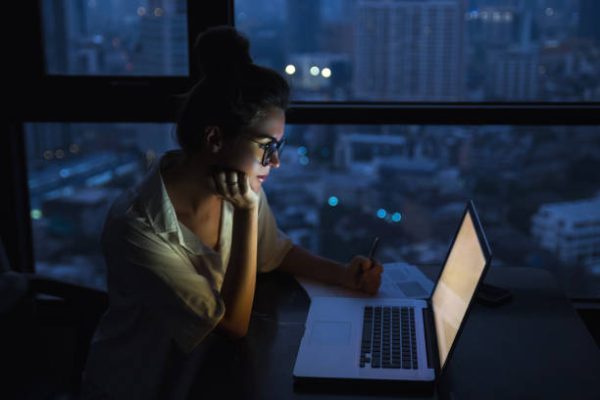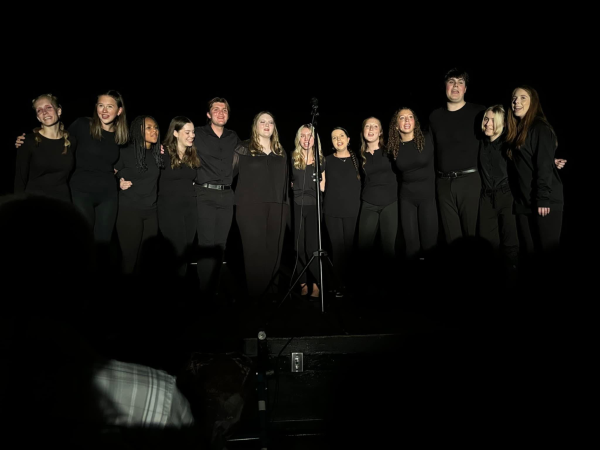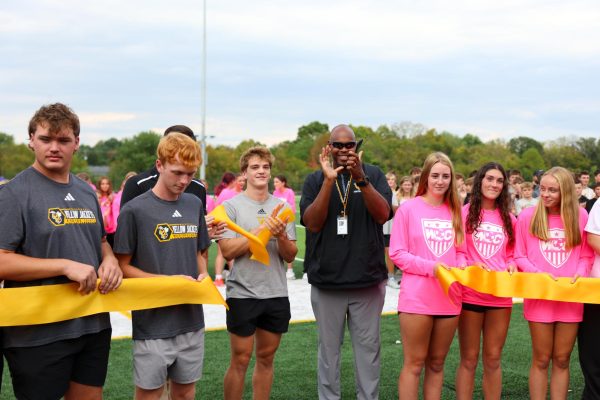The Jacket Journal Storms KET
On Tuesday, November 12th, 2019, the Jacket Journal Staff went on a tour and took a lesson on video production at KET in Lexington.
The Jacket Journal staff poses on the set of Comment on Kentucky.
KET stands for Kentucky Education Television. This is a network of PBS that serves the U.S. Commonwealth of Kentucky. The network has programs such as Doc Martin, Comment on Kentucky, and Big Family, among others. On November 12, the Jacket Journal staff went to KET’s Lexington location.
When approaching the door to enter, we were greeted with grey-tinted glass walls and lettering above the door that read “KET The Kentucky Network.”
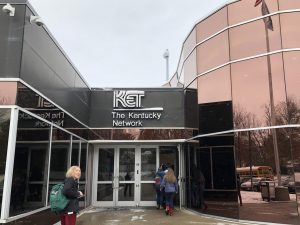
KET Lexington, Kentucky location entrance.
When we walked inside, there was a front desk straight ahead and to the right a lobby. The room was filled with awards KET had won throughout the years. It also had some trees by the huge glass wall. “Where Learning Comes to Life” was plastered above the entrance. Two of the walls had murals on them. One of them was of the Sesame Street character, Big Bird. The second was a variety of characters from the shows Sesame Street, Curious George, Cat and the Hat, and many more!
Our guide, Cynthia Warner, led us into another room and showed us two paintings of the founder of KET, Leonard Press and the KET Executive Director and CEO, Virginia Gaines Fox.
We were then led into the video room for students, which included a few rows of computers, a TV upfront and camera equipment, along with a green screen off to the side.
Cynthia gave us a wonderful lesson on video production, during which we learned skills like how to pan cameras, what the movements are called and some quick tips on recording and editing videos.
Afterward, she provided us a tour of Studio A as well as other various video and sound rooms.
The Jacket Journal Staff left KET feeling knowledgeable and eager to start creating thanks to Cynthia Warner, the Multimedia Education Consultant who provided our tour and lesson.
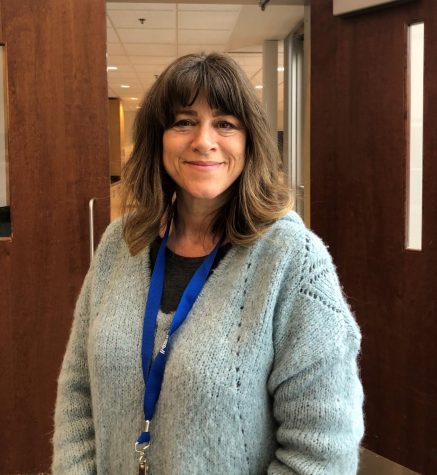
Multimedia Education Consultant, Cynthia Warner, gave the tour and provided a training lesson on video production.
Cynthia Warner
Multimedia Education Consultant
How long have you been working with KET?
20 years.
What made you choose KET?
Everything fell into place. I was teaching via a grant that ended and needed a job. KET needed an education consultant.
How did you get interested/involved in video production?
It was all on-the-job training since it was one of my responsibilities as an education consultant.
When do you think the prime age to get involved in video production is?
4th grade.
During the lesson you mentioned you used to be a middle school teacher, what school did you teach at and what subject did you work with? How did you transition from that job to KET?
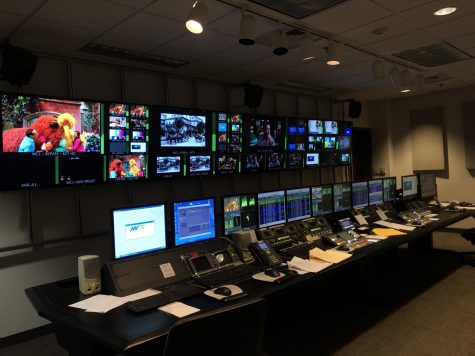
The sound control room for the shows on air.
I taught MS Drama and English in Albuquerque. I met my husband, married him, and we moved back to Carlisle, Kentucky (my hometown) and from there I taught English, Drama, and Media at Nicholas County High School. This is how I met Jeff Gray, my KET education consultant. After a year and a half, I accepted a job as a K-12 Arts and Humanities consultant with Nicholas and Robertson County Schools. This is how I met Liz (Coogle) Jewell, KET Distance Learning teacher, who asked me to come to KET to help present a PD (professional development day). While at KET, Jeff Gray entered the meeting and announced a job opening. I filled out the application and Jeff walked it to HR (human resources).
Although you are the one teaching people, what valuable things have you learned from your students through working with KET and/or middle school?
I have learned so many things from students throughout the years. From foley art examples to tech tips and, especially, how to look at ideas and processes through different perspectives have all taught me more content and how to be a better teacher.
Do you feel video production quality is going to increase or decrease dramatically over the next 10 years?
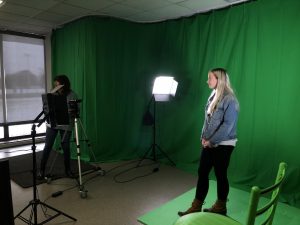
Jacket Journal staff reporter, Alyssa Hysell (11), helps teach the class.
Though I think that video creation will be here for a long time, I think the quality is already decreasing. Everyone is a media creator these days and I think that will just continue to be the case. The way modern productions are shot is much more raw. I think it is nice that it is much more personal, but I believe the old way of constructing a story with pictures and sound will always be important. I believe we are moving toward a more virtual world, but the fundamentals of video production are important to any visual story.
What do you wish to see improve regarding video production and education over the next few years?
I hope media literacy is more prominent in education and that we all become better communicators, no matter what form of media we choose to create or consume. I hope that video production projects in the classroom continue because they provide students with a voice in our ever-changing world. We get to experience others’ stories through their eyes and ears. Being more informed about how to tell that story in an effective and engaging manner can be empowering for students and their audiences.
Why do you think it is so important for students to get this experience?
As I mentioned above, having an outlet for students to voice their concerns, triumphs, disappointments, experiences, imaginations, creativity, fears, etc., is probably one of the most powerful aspects of creating media.
Do you have any tips or words of encouragement for people wanting to get involved in video production?
Always take the time to plan projects and keep the audience front and center. Consider where the audience is during each scene and that is where you should place cameras. Audio is 50% of the experience. Be responsible, appropriate, and considerate. You are asking to use someone’s time when you ask them to watch your video. Make it a valuable use of that person’s time. Also, be sure to use any opportunity to inform your audience, even if it is primarily for entertainment purposes.

Part of the set for the show Comment on Kentucky.
On behalf of The Jacket Journal, we would love to thank Cynthia Warner for her interesting and educational training and tour she provided to us! We would also like to thank KET for allowing us to have this opportunity and the other people we encountered throughout the tour who gave us insight on their position and what they do, you are greatly appreciated!
If your school would like to receive media arts workshops from KET you can do so here.

Justice Mudd is a sophomore at Woodford County High School; it is her first year as a Staff Reporter for The Jacket Journal, and it is her second year...

